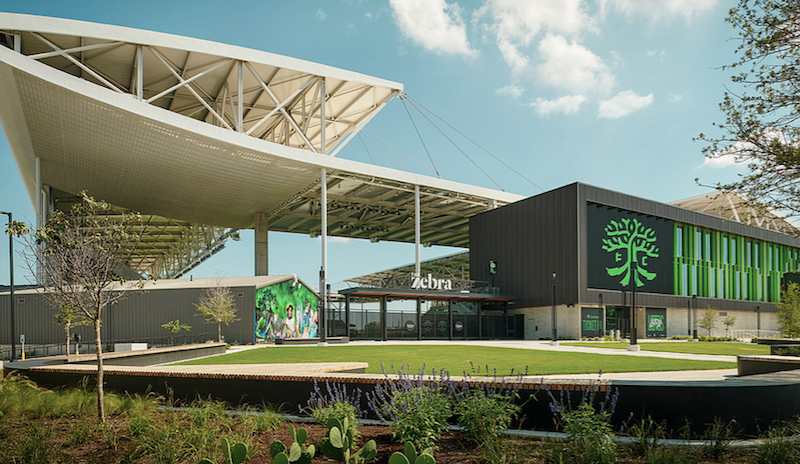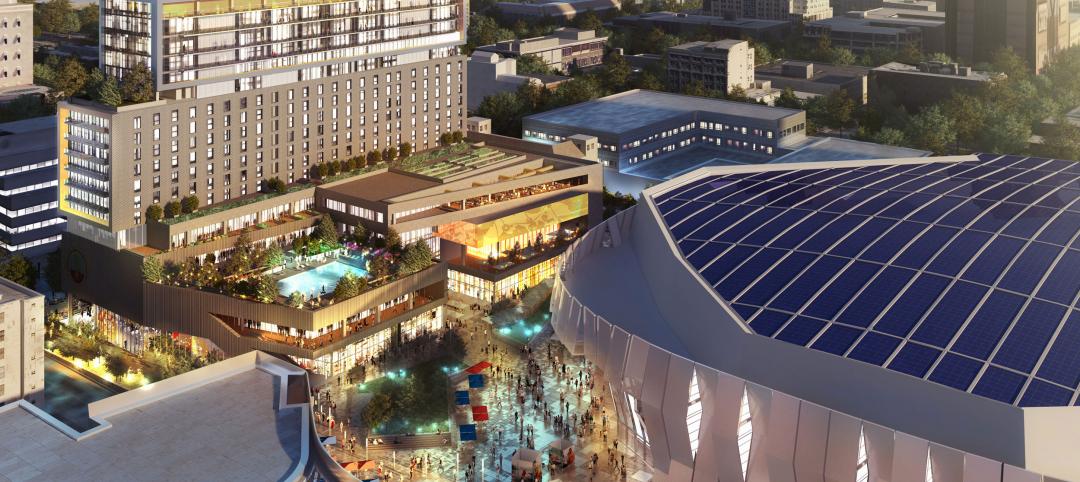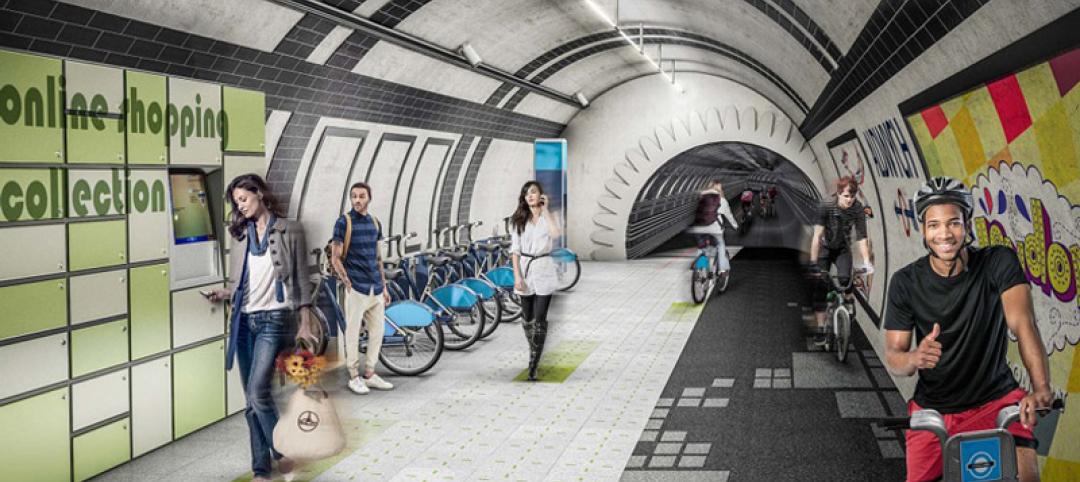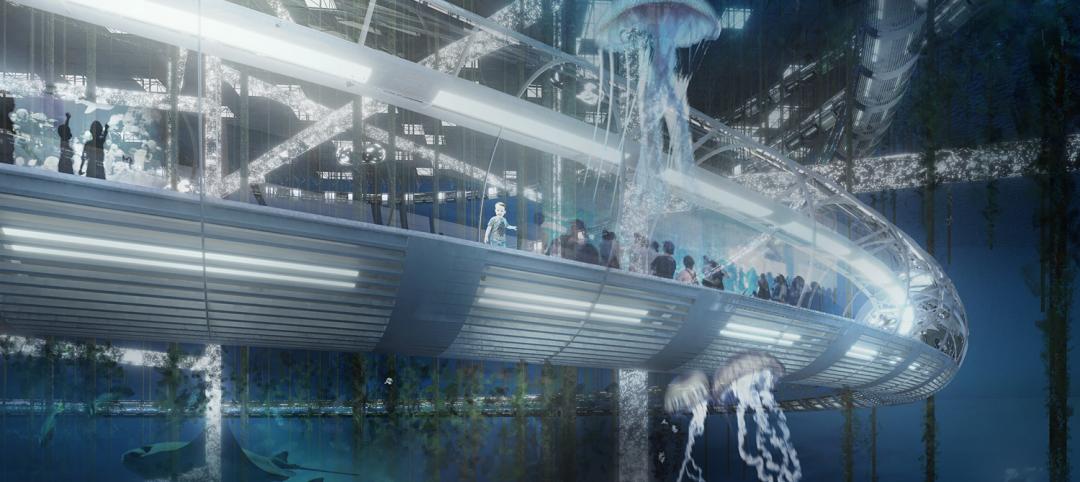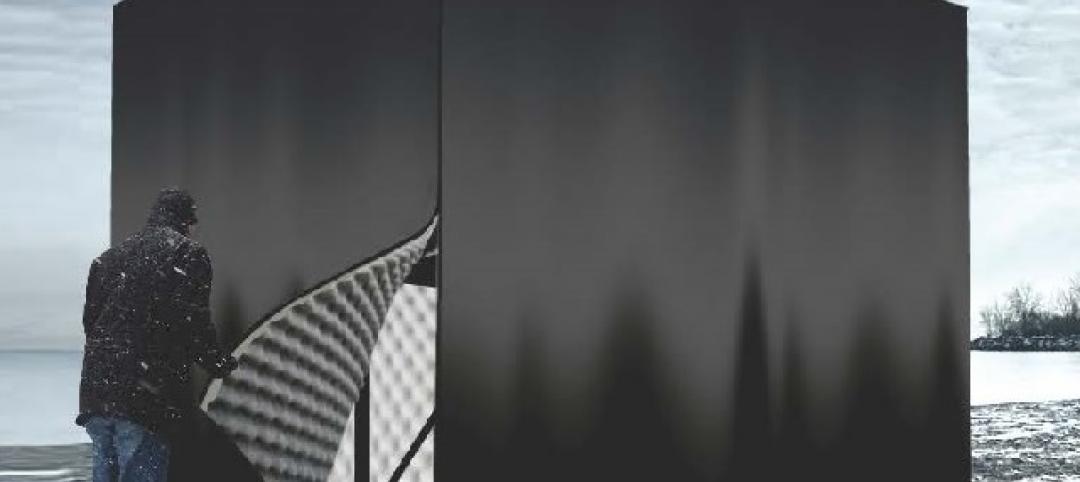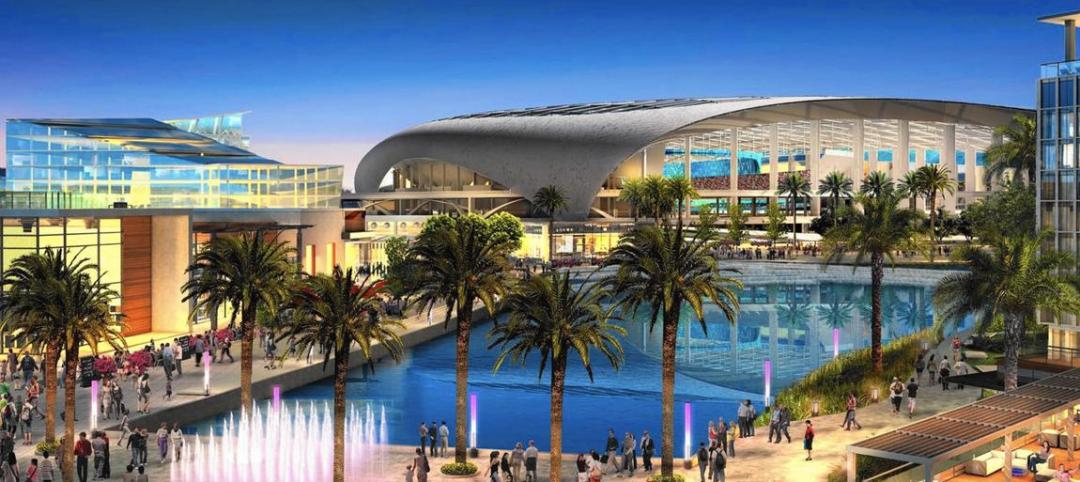Q2 Stadium, a new 20,000-seat stadium for Austin FC, has completed construction. The Gensler-designed project capitalizes on its natural landscape, the city’s cultural heritage, and its tech-forward growth.
The project features one of the largest roofs on a soccer-specific stadium, which will cover every seat, protecting fans from rain and sun. The canopy enclosure features a combination of customized curved metal panel systems on the bullnose, soffit, and edges; and a single-ply roofing on the top side of the canopy. The stadium is also oriented on its site to pull in breezes aided by open corners, an open-air concourse, and breathable mesh fabric seats.
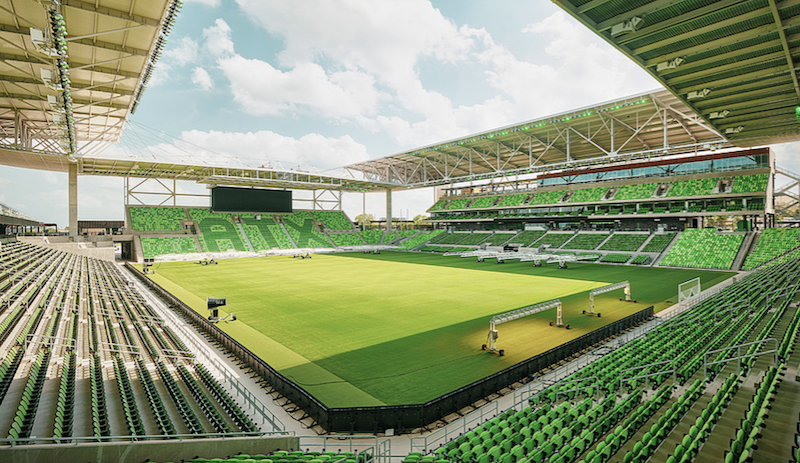
Open concourses and standing areas allow fans to move around and socialize or visit local food vendors. VIP guests can access hospitality-inspired air-conditioned clubs and suites. Multiple outdoor spaces surround Q2 Stadium, including an outdoor amphitheater and a stage for live music. Outdoor spaces are open to the public on non-game days and can host farmer’s markets and concerts.

Q2 Stadium is the first MLS stadium to use Whole Building Life Cycle Analysis (WBLCA) to environmentally optimize the structure and enclosure and reduce embodied carbon. The WBLCA illustrated the environment savings achieved through the use of a cable system to support portions of the roof, as well as optimizations to the concrete mix designs.
In addition to Gensler’s design, the project was delivered with Walter P Moore’s multi-discipline service approach, which includes structural engineering, enclosure engineering, water proofing consulting, construction engineering, and whole building life cycle assessment.
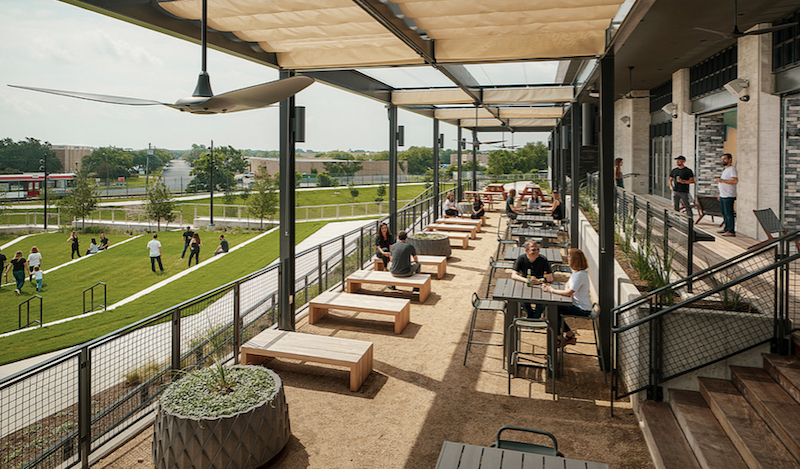
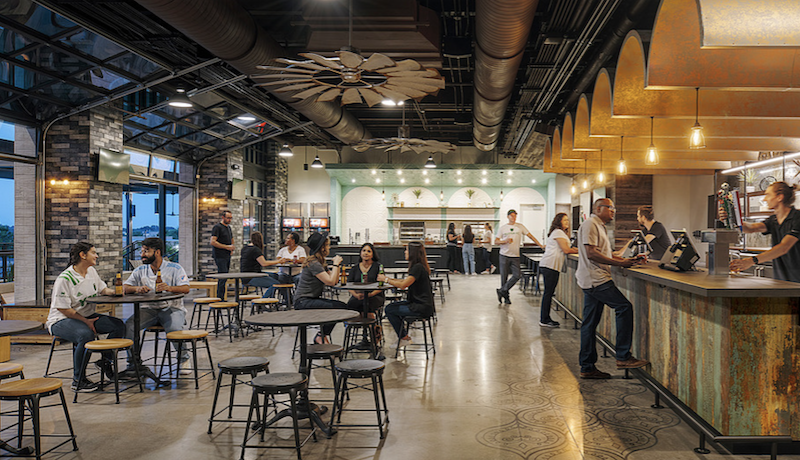
Related Stories
Mixed-Use | Feb 13, 2015
First Look: Sacramento Planning Commission approves mixed-use tower by the new Kings arena
The project, named Downtown Plaza Tower, will have 16 stories and will include a public lobby, retail and office space, 250 hotel rooms, and residences at the top of the tower.
Codes and Standards | Feb 12, 2015
New Appraisal Institute form aids in analysis of green commercial building features
The Institute’s Commercial Green and Energy Efficient Addendum offers a communication tool that lenders can use as part of the scope of work.
Transit Facilities | Feb 12, 2015
Gensler proposes network of cycle highways in London’s unused underground
Unused tube lines would host pedestrian paths, cycle routes, cultural spaces, and retail outlets.
Cultural Facilities | Feb 6, 2015
Under the sea: Manmade island functions as artificial reef
The proposed island would allow visitors to view the enormous faux-reef and its accompanying marine life from the water’s surface to its depths, functioning as an educational center and marine life reserve.
Sports and Recreational Facilities | Feb 4, 2015
Arup unveils plans for the new A.C. Milan stadium
The venue will include a modern stage for the home matches together with a hotel, sports college, restaurants, children’s playground, green areas, and spaces open to the city and dedicated to public use.
| Jan 16, 2015
Artsy lifeguard stations will brighten Toronto’s snowy beach
Five winning designs have been unveiled for lifeguard stands that will double as public space art installations on Toronto's beach.
| Jan 15, 2015
Libeskind unveils 'zig zag' plan for recreational center near Vilnius ski area
Perched on the highest peak between Vilnius' historic quarter and downtown, the Vilnius Beacon will be a hub for visiting skiers and outdoor enthusiasts.
| Jan 7, 2015
4 audacious projects that could transform Houston
Converting the Astrodome to an urban farm and public park is one of the proposals on the table in Houston, according to news site Houston CultureMap.
| Jan 5, 2015
Another billionaire sports club owner plans to build a football stadium in Los Angeles
Kroenke Group is the latest in a series of high-profile investors that want to bring back pro football to the City of Lights.
| Jan 5, 2015
Beyond training: How locker rooms are becoming more like living rooms
Despite having common elements—lockers for personal gear and high-quality sound systems—the real challenge when designing locker rooms is creating a space that reflects the attitude of the team, writes SRG Partnership's Aaron Pleskac.


